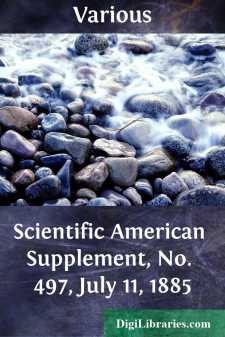Categories
- Antiques & Collectibles 13
- Architecture 36
- Art 48
- Bibles 22
- Biography & Autobiography 813
- Body, Mind & Spirit 142
- Business & Economics 28
- Children's Books 15
- Children's Fiction 12
- Computers 4
- Cooking 94
- Crafts & Hobbies 4
- Drama 346
- Education 46
- Family & Relationships 57
- Fiction 11828
- Games 19
- Gardening 17
- Health & Fitness 34
- History 1377
- House & Home 1
- Humor 147
- Juvenile Fiction 1873
- Juvenile Nonfiction 202
- Language Arts & Disciplines 88
- Law 16
- Literary Collections 686
- Literary Criticism 179
- Mathematics 13
- Medical 41
- Music 40
- Nature 179
- Non-Classifiable 1768
- Performing Arts 7
- Periodicals 1453
- Philosophy 64
- Photography 2
- Poetry 896
- Political Science 203
- Psychology 42
- Reference 154
- Religion 513
- Science 126
- Self-Help 84
- Social Science 81
- Sports & Recreation 34
- Study Aids 3
- Technology & Engineering 59
- Transportation 23
- Travel 463
- True Crime 29
The Mirror of Literature, Amusement, and Instruction Volume 13, No. 363, March 28, 1829
by: Various
Categories:
Description:
Excerpt
GUY'S CLIFF.
"A home of pleasure, a place meet for the Muses."—Leland.
Warwick—what olden glories and tales of other times are associated with this county. How many of its sites are connected with high-minded men and great and glorious actions. To the antiquary, the poet, and the philosopher, every foot is hallowed ground; and even the cold calculations of the commercial speculator treat with regard a county whose manufactures add to the stock of national wealth and importance. How many stories of love, war, and chivalry are told of its halls, castles, and monasteries, their lords and ladies and maidens of high birth. Kenilworth and Stratford—Leicester, Shakspeare and Warwick—like long trails of light, all flit before us in this retrospective dream of the days of "merry England."
Guy's Cliff is situated about one mile and a half north-east of Warwick. Here the river Avon winds through fertile meadows; and on its western bank, a combination of rock and wood, singularly picturesque, invited at an early period the reveries of superstitious seclusion and poetical fancy. It is supposed that here was an oratory, and a cell for the hermit, in Saxon times; and it is certain that a hermit dwelt in this lovely recess in the reigns of Edward III. and Henry IV. This is the spot to which the renowned Guy, Earl of Warwick, is said to have retired after his duel with the Danish Colbrond; and here his neglected countess, the fair Felicia, is reported to have interred his remains. It appears that Henry V. visited Guy's Cliff, and was so charmed with its natural beauties, and, probably, so much interested by the wild legend connected with the place, that he determined to found a chantry for two priests here. But war and an early death prevented the performance of this, among many other pious and benevolent intentions ascribed to the heroic Henry. Such a chantry was, however, founded in the first year of Henry VI. by Richard Beauchamp, Earl of Warwick; but the chapel and some contiguous buildings were not completed till after the earl's decease. In this delightful retreat lived John Rous, the antiquary, as a chantry priest.
About the middle of the eighteenth century, this estate passed to a private gentleman, who built a handsome mansion here. But the chief attractions are the natural beauties of the grounds—as the rock, on which the house and chapel are built. Here is shown a cave, devoutly believed by neighbouring peasants to be that which Guy "hewed with his own hands," and in which he lived
Like a Palmer poore.
The chapel founded by Richard Beauchamp was a plain, substantial edifice. The founder caused to be carved from the solid rock on which this chapel abuts, a rude statue of the famous Earl Guy, about eight feet in height. It would appear, from a print in Dugdale's Warwickshire, that this figure was well preserved in the seventeenth century.
ANCIENT CROSSES IN ENGLAND.
(For the Mirror.)
"She doth stray about
By holy crosses, where she kneels and prays
For happy wedlock hours."
Shakspeare....












